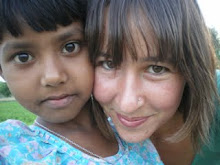It is one of the five organs of vitality or sensation: prana "breath", vac, "speech", caksus "sight", shrotra "hearing", and manas "thought" (nose, mouth, eyes, ears and mind. Upanishads).
In Vedantic philosophy, prana is the life-sustaining forces of all living things and is the central concept of Ayurveda, as is Qi (Chi) in Chinese philosophy.
Sun and sunshine are major sources of prana and the coconut is said to be the food which holds the most concentrated amount of prana as it is the food which grows closest to the sun. Food which has been cooked more than 24 hours before has very little or no prana left in it. The same goes for canned, frozen or processed food.

To change something, we must alter the energy which creates it. This quantum fact relates to the practice of yoga. To facilitate positive changes in the body and mind we must understand the energy through which they work.
The five pranas
In Ayurveda, Prana is further classified into subcategories, referred to as prana vayus. According to Hindu philosophy these are the vital principles of basic energy and subtle faculties of an individual that sustain physiological processes.
- Prana : Responsible for the beating of the heart and breathing. Prana enters the body through the breath and is sent to every cell through the circularatory system.
- Apana : Responsible for the elimination of waste products from the body through the lungs and excretory systems.
- Udana : Responsible for producing sounds through the vocal apparatus, as in speaking, singing, laughing, and crying. Also it represents the conscious energy required to produce the vocal sounds corresponding to the intent of the being. Hence udana gives the higher centers total control over the body.
- Samana : Responsible for the digestion of food and cell metabolism (i.e. the repair and manufacture of new cells and growth). Samana also includes the heat regulating processes of the body. Auras are projections of this current. By meditational practices one can see auras of light around every being. Yogis who do special practise on samana can produce a blazing aura at will.
- Vyana : Responsible for the expansion and contraction processes of the body, e.g. the voluntary muscular system.




No comments:
Post a Comment